5 Top Rated Kidney Belts for Motorcycle Riding
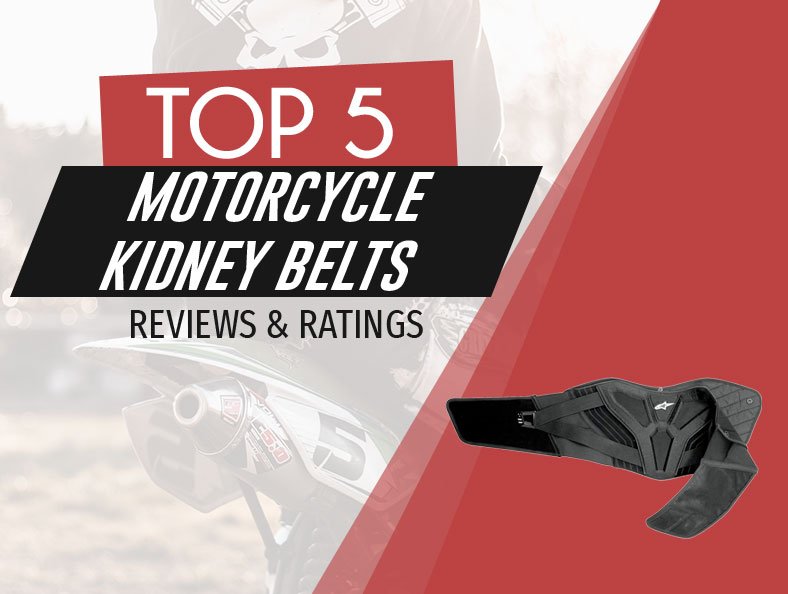
Road Racerz is proudly supported by our readers. Products purchased through links on our site may provide us a commission. Learn More
Although biking is fun and exciting, it can also be dangerous in more ways than one. You expose yourself to different kinds of shock and impact than if you were in a car or another enclosed vehicle.
While a helmet is undoubtedly the most critical piece of safety equipment, you should consider a few other ways of protecting yourself as well.
A motorcycle kidney belt is one such piece that many people wear, but many also overlook. It’s meant to protect your lower back from wind, impact, and shock.
Take a few minutes to discover the best belts and why it’s important to have one.
5 Highest Rated Motorcycle Kidney Belt Reviews
| PRODUCT | FEATURES | |
|---|---|---|
Alpinestars 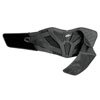 | Alpinestars Features: Highly supportive, removable thermal liner Size: S - XL | Check Price |
EVS Sports 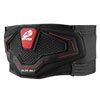 | EVS Sports Features: Breathable, comfortable, ergonomic design Size: S - XXL | Check Price |
O’Neal 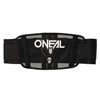 | O’Neal Features: Easy to put on and remove, lightweight design Size: M - XL | Check Price |
Leatt 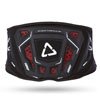 | Leatt Features: CE certified, dual-action elastic closure Size: S - XXXL | Check Price |
Fly Racing 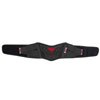 | Fly Racing Features: Easy to put on and remove, comfortable EVA foam Size: S - XL | Check Price |
Alpinestars – Ideal for Touring
Alpinestars is a well-known name in the industry, so it’s no surprise we included this belt as one of the best. This one is ergonomically designed to provide protection, support, and some added stability for touring.
It’s made of thermoformed PE foam along with molded PU support panels. The combination is made to provide comfort regardless of how long you ride.
One of the best things about it is its removable quilted thermal liner. It makes the belt more versatile and suitable for different weather conditions.
Another thing worth noting is the dual elastic waistband. It provides a precise and secure fit without being loose or flapping in the wind.
Keep in mind that it also has a membrane between the layers for some added protection against the wind and other weather elements.
PROS
- Highly supportive
- Removable thermal liner
- Wind breaking flaps
CONS
- Sizes run a bit small
EVS Sports – Ergonomic
This ergonomically designed belt is ideal for all riders who need some added mobility and support. It features a reinforced lower spine panel that makes it that much better for people with back pain.
The best thing about this one is its dual pull Velcro adjustment system. It allows you to adjust the size a bit to accommodate different riding jackets and shirts you’re wearing.
Another thing we should mention is channeled hex-foam. It provides maximum support and ventilation regardless of the weather you’re riding in.
This one has a low-profile and breathable construction that’s especially comfortable during hot summer days.
It comes in several sizes as well as a youth model for younger riders who need some more support in their lower back area.
PROS
- Breathable
- Adjustable size
- Comfortable, ergonomic design
CONS
- It’s narrower than most models
O’Neal – Gentle Compression
O’Neal belt is quality-made, supportive, and comfortable to use for hours on end. It protects your lower back from fatigue, shock, and wind.
This one applies a bit of pressure on your lower back and abdomen. It compresses your internal organs a bit to protect them from wind and impact.
The extra layer of coverage is ideal for providing support and comfort at all times. Plus, there are several sizes to choose from. Each of them features two external Velcro straps for some added adjustability.
Velcro straps hold well and won’t loosen even in wet weather conditions.
Keep in mind that it weighs only 8 ounces, so you won’t even feel that it’s there. The light-duty compression it provides to your lower back and abdomen is comfortable regardless of the size you go for.
PROS
- Easy to put on and remove
- Lightweight design
- Strong Velcro straps
CONS
- Might be too thick for summer
Leatt – Extra Wide
This Leatt belt might be your best choice if you’re looking for an extra-wide piece to protect your back. It covers more of your back, providing more support and comfort.
It’s stretchy and comfortable to use at all times, but especially when going on a long trip. It reduces fatigue and wind impact that can make your rides uncomfortable.
As we said, this one is extra wide. It also features 3DF foam for ultimate impact protection, so it’s suitable for everyday use.
Also, the thermos-foamed 3D air channels provide enough ventilation for your skin to breath under the belt. This is especially important during hot weather.
Another thing worth noting is that this one is impact tested and CE certified, exceeding the EN 1621-3 standard.
PROS
- Extra-wide design
- CE certified
- Dual-action elastic closure
CONS
- The Velcro straps are somewhat narrow
Fly Racing – Supportive
Fly Racing is a good choice if you’re looking for a supportive, easy-to-use belt for all weather conditions. It’s designed to defend you from shock, impact, and weather elements.
The belt is made of perforated and thermoformed EVA foam and has a unique design. It might be a bit too narrow for some people, but this usually depends on personal preference.
Keep in mind that it comes in two sizes only. It has an attractive black and red design and durable construction to provide support, longevity, and resistance.
The belt is stretchy and easy to use regardless of the rest of your equipment. It attaches via Velcro straps that are strong and can hold well regardless of the weather.
Also, this one is CE certificated, which gives it a bit more reliability and security.
PROS
- Easy to put on and remove
- Lightweight
- Comfortable EVA foam
CONS
- Somewhat narrow
Motorcycle Kidney Belt Buying Guide
Fitting
A kidney belt can be comfortable and efficient only if it fits you good. For this reason, you should focus on finding the right size and model that fits your lower back.
It should fit so that it doesn’t limit your breathing or movements when you ride. The best models are adjustable, allowing you to find the best fit within the size you’ve picked.
Keep in mind that it should fit you snugly but not too tightly.
Material
Although you’ll come across many options, you should look for a belt that’s made of strong and durable materials.
Foam padding is a good choice in most cases as it provides sufficient comfort and support in your lower back area. It’s moisture-wicking and typically pretty breathable.
Still, make sure that the model of your choice isn’t too thick and bulky. The material should be strong enough to endure impact without adding too much extra weight.

Ease of Usage
Ease of usage depends on a few factors that are equally important to consider. In most cases, it depends on its Velcro straps or whatever other attachment systems it has.
Velcro straps are typically the easiest to use because they’re also adjustable. However, they should be wide and strong enough to support the belt so that it doesn’t go loose.
Your kidney belt of choice should be easy to put on and remove without too much hassle.
Durability
Make sure to go for a durable model that will last you a long time. Durability usually depends on the quality of materials and the overall strength of its straps.
Look for durable and strong materials that can resist whatever impact and shock you might be exposed to. Also, make sure that it has durable stitching so that it doesn’t tear after a few uses.
The best way to ensure durability is to go for a reliable brand.
Safety Certification
Safety certification is always important as it provides some added reliability. Sadly, not many belts have a safety certification.
You’ve probably noticed that some of the models we reviewed have CE certification. CE certification is mandatory in the European Union, which is important to know if you plan on traveling to Europe.
It adds a bit to the overall reliability of your belt to know that professionals have checked and found it safe to use on the road.
Adjustability
Most kidney belts are adjustable to a certain extent. You still have to pay special attention to the size and fit you choose, so don’t rely on adjustability too much.
In most cases, adjustability is provided by the Velcro straps that close the two ends of the belt together. These straps allow you to adjust the size and fit a bit, but even that depends on how long they are.
Make sure to always go for an adjustable model because these are more comfortable to use.
Impact Resistance
One of the primary reasons why you should have a kidney belt is to protect the area in case of an impact. A quality model is made from durable materials that are difficult to tear or pierce.
Impact resistance is critical because you never know what can happen on the road. Plus, a belt that is resistant to impact is probably also resistant to everything else, including the wind and sudden jerky movements.
Look for a model that’s durable and possibly even reinforced for some added resistance.
Pricing
Most kidney belts are rather affordable, although some difference in price exists. The most expensive models are typically most adjustable and durable. Still, you can find many affordable models that are equally protective.
For this reason, you shouldn’t focus on the price as much. Check other buying factors we mentioned, such as materials, impact resistance, and durability.
It wouldn’t hurt to have a pre-set budget so that you can have an idea of a price you’re okay with.

What Is a Kidney Belt?
A kidney belt is essentially a wide band made from reinforced material and designed to protect your lower back and abdomen. You’re supposed to wrap it around the lower torso to protect vital internal organs in case of an impact.
Still, it’s not there to protect you against impact only. It’s also highly useful in protecting your lower back and abdomen from the wind that can often cause fatigue and make you feel uncomfortable during rides.
A kidney belt is something not only motorcyclists use. You can see it on weightlifters, manual workers, and people recovering from medical conditions and injuries.
Benefits of Using a Kidney Belt
Kidney Protection
Its primary role is to protect your kidneys from the wind and potential impact in case of an accident. It’s made of a thick material that’s made to present a barrier between your vital organs and the road.
It prevents your kidneys from catching a cold that can often be uncomfortable and dangerous in the long run.
Prevents Pain
Riding across a long distance can cause fatigue and pain later on. A reliable belt that supports your lower back and abdomen can usually prevent this pain.
A belt compresses your back and abdomen very slightly so that it’s not uncomfortable. But, the added pressure prevents pain and fatigue that you might feel when on long trips.
Prevents Injuries
As we said, a kidney belt is a barrier between your vital organs and the road. There are many parts on your bike that can potentially hurt you in case of an accident.
Having durable and thick fabric on your lower back and abdomen area offers a bit more safety and protection in case the worst happens.
Support
The slight pressure that a belt applies keeps everything in place, supporting your belly and abdomen as well as your back.
It’s the best way of supporting these parts of your body without too much hassle or any pain regardless of how long your trip is.
Better posture
A good belt can fix your posture the first time you put it on. It doesn’t allow you to sit in a position that’s bad for your back.
As a result, you’ll notice your rides are more comfortable even when you ride for hours on end.
Conditions and Riding Conditions Where You Need a Kidney Belt
You should wear a kidney belt whenever you’re on trail rides or riding on dirt tracks. It can help prevent strain on your body caused by sudden movements in sliding and sharp turns.
A kidney belt is nearly necessary for motocross or enduro riders, and everyone who enjoys off-roading.
It protects your body in case of minor collisions, preventing kidney bruising or road rash. Plus, it supports your abdomen and lower back when you come across a root, rock, or uneven pavement.
It’s ideal for people who are prone to back pain or have had some type of back injury. You’ll notice it can help you if your back is stiff and sore.
Frequently Asked Questions
Are leather kidney belts more recommended?
Leather is a durable material often used for kidney belts. Leather models are typically durable, resistant, and long-lasting, but they require special care.
Much like all other leather equipment, belts made from this material require appropriate maintenance. Plus, these are also pricier than most other materials.
Are kidney belts required for riders with medical conditions?
Riders with medical conditions should wear a kidney belt to get some more protection and support in the lower back and abdomen area.
Wearing one can make it more comfortable to ride across long distances without having to stop and rest as frequently.
Is a kidney belt required for motocross riders?
Motocross riders are obligated to wear a kidney belt, but wearing one is always recommended. As we said, added support and protection a belt can provide could come in handy during cross-country racing.
Other riders can benefit from wearing one just as well. Still, keep in mind that only professional racers are obligated to wear it.
Conclusion
Having the best motorcycle kidney belt makes all the difference when on the road. It doesn’t matter the bike you ride or how long your trip will take. Everyone can benefit from wearing a quality belt.
You’ll notice the difference in comfort and support the very first time you put it on. And, the best thing is that these are typically simple and straightforward to use at all times.
All you have to do is pick one among the few models we reviewed. Use the information we shared in our guide to choose one if you haven’t already.











